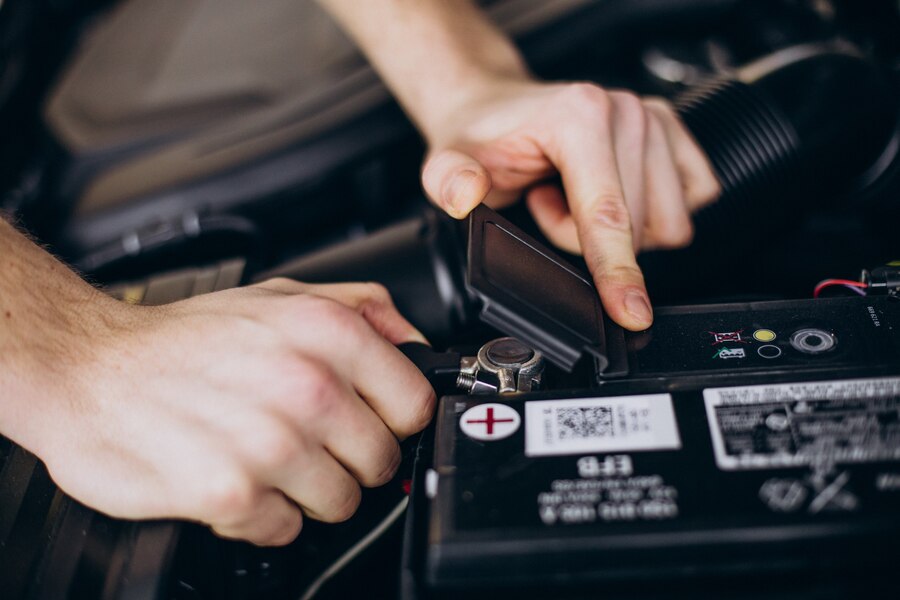How Does a Car Battery Charge?

Ever wondered, how does a car battery charge? Your car battery is the unsung hero of your vehicle, responsible for starting the engine and powering all the essential electronic systems that keep your car running smoothly. From the moment you turn the ignition key, a carefully orchestrated process begins, ensuring that your battery stays charged and ready to support your car’s power needs. In this article, we’ll break down the car battery charging process, explore different methods for charging, and share practical tips to extend your battery’s lifespan. We’ll also answer common questions about maintenance, troubleshooting, and when to replace your car battery.
Understanding how does a car battery charge isn’t just a matter of convenience—it’s also about safety, reliability, and avoiding costly breakdowns. Whether it’s the alternator keeping your battery charged as you drive or an external charger giving it a boost, knowing the ins and outs of how it works can save you from being stranded with a dead battery at the most inconvenient time.
What is a Car Battery and Why Is It Essential?
A car battery is the lifeblood of your vehicle’s electrical system. It supplies the power needed to start the engine and keeps your vehicle’s accessories, like lights, music systems, and navigation, running when the engine is off. Without a charged battery, your car simply won’t function.
Types of Car Batteries
- Lead-Acid Batteries: Common in most vehicles, these are affordable and reliable for daily use.
- AGM (Absorbent Glass Mat) Batteries: More durable and efficient, often used in high-performance vehicles.
- Lithium-Ion Batteries: Lightweight, long-lasting, and typically found in electric and hybrid vehicles.
Each of these battery types has unique characteristics, especially in terms of how does a car battery charge and the specific requirements of the charging process. Understanding your battery type helps ensure that the right charging method is used to keep it at optimal performance.
How Does a Car Battery Charge?
The process of charging a car battery is a fascinating combination of chemistry and electrical engineering. A car battery stores electrical energy chemically, converting it into power when needed. But how does a car battery charge, and how is this energy replenished? Here’s a detailed breakdown of the process:
1. The Role of the Alternator in How Does a Car Battery Charge
The alternator is the key player in the battery charging in cars process. As the engine runs, the alternator converts mechanical energy from the engine into electrical energy, which is then used to recharge the battery and power various systems in the car at the same time. The alternator’s ability to recharge the battery is continuous but requires the engine to run at moderate speed for effective charging. This process ensures that your battery stays charged while you’re driving, keeping your vehicle’s systems running efficiently.
2. The Chemical Process Behind Car Battery Charging
Inside your car battery, lead plates and an electrolyte solution (a mixture of sulfuric acid and water) work together to facilitate a chemical reaction. When the battery discharges, lead sulfate forms on the plates. During the charging process, this reaction is reversed, and the lead sulfate is broken down, restoring the battery’s energy. This chemical reaction is at the core of how does a car battery charge and why it’s so crucial to monitor your battery’s health.
3. Voltage Levels and How They Affect Car Battery Charging
A fully charged car battery typically reads 12.88 volts. However, when the alternator is active, it generates a slightly higher voltage—around 14 volts—pushing energy back into the battery. This helps ensure that your battery is constantly charged and ready to supply power whenever necessary. Understanding how voltage levels affect the charging process can be key to knowing when your battery needs attention.
Understanding how car battery charges through these mechanisms helps you maintain its health and avoid unexpected failures.
Methods of Charging a Car Battery
There are several ways to charge a car battery, each suited to different situations. Whether you’re dealing with a routine recharge or an emergency, here’s how to handle the car battery recharging method effectively.
1. Using the Alternator
The alternator is the most common method for maintaining a battery’s charge during everyday use. As you drive, it continuously replenishes the battery.
- Advantages:
- Effortless and automatic.
- Requires no external equipment.
- Limitations:
- Ineffective for deeply discharged batteries.
- Prolonged idling may not fully recharge the battery.
2. Using a Battery Charger
For deeper recharges, especially when the battery is significantly drained, an external charger is invaluable.
- Steps to Follow:
- Connect the positive clamp of the charger to the battery’s positive terminal and the negative clamp to a grounded surface.
- Set the voltage and amperage based on your battery type.
- Allow the charger to operate until the battery reaches a full charge.
This method is highly effective and ideal for regular maintenance.
3. Jumpstarting the Battery
In emergencies, jumpstarting is a quick battery charging in car method using another vehicle’s battery. While this doesn’t fully recharge the battery, it provides enough power to start the engine and let the alternator take over.
Factors That Affect Battery Charging Efficiency
Several variables can impact how effectively your car battery charges. These include:
- Battery Age: Older batteries hold less charge and take longer to recharge.
- Temperature Extremes: Cold weather slows the chemical reactions in the battery, while excessive heat accelerates wear and tear.
- Usage Patterns: Short trips don’t allow the alternator enough time to fully recharge the battery.
- Parasitic Draw: Accessories like lights or onboard electronics can drain the battery when the car is off.
By understanding these factors, you can optimize the car battery charging process and ensure your battery stays in peak condition.
How to Maximize Battery Life
Maintaining your car battery doesn’t have to be a hassle. By following a few simple steps, you can extend your battery’s lifespan and keep it performing at its best:
- Regular Maintenance: Clean the battery terminals regularly to remove any corrosion that could impede proper charging.
- Avoid Deep Discharges: Never allow your battery to completely drain, as deep discharges can damage the internal components.
- Use a Smart Charger: A smart charger will automatically adjust the voltage and current to prevent overcharging, ensuring the battery is charged safely and efficiently.
By taking these measures, you can ensure that your car battery stays healthy, performs reliably, and lasts as long as possible.
When to Replace Your Car Battery
While charging can often resolve many issues, there are times when replacement is inevitable. You may need to replace your battery if:
- Frequent Failures: If your battery consistently fails to hold a charge, even after charging, it’s time for a new one.
- Visible Damage: Cracks, bulges, or leaks are signs that your battery is compromised and needs replacing.
- Foul Odors: A rotten egg smell indicates a serious chemical leak, requiring immediate attention and potentially a replacement.
By understanding how does a car battery charge, you can identify when it’s time to replace the battery and avoid costly breakdowns.
Why Choose KwikFix Auto for Your Battery Needs?
KwikFix Auto offers:
- Premium Batteries: A wide selection of top brands like Amaron, Exide, and SF Sonic.
- Expert Assistance: Free testing and professional advice for all your battery concerns.
- Convenience: Multiple service centers across Mumbai, Thane, and Navi Mumbai.
Call to Action: Don’t let a weak battery disrupt your day! Visit KwikFix Auto or call us at +91 9950 345 345 for reliable solutions and quality batteries.
Frequently Asked Questions
Q1. How does a car battery charge while driving?
A1. The alternator recharges the battery by converting the engine’s mechanical energy into electrical power.
Q2. Can I fully recharge a completely dead battery?
A2. While some dead batteries can be revived, they rarely regain full capacity and may require replacement.
Q3. How long does a car battery take to recharge?
A3. It can take 4–24 hours depending on the charger and the battery’s condition.
Q4. Can I overcharge my car battery?
A4. Yes, overcharging can damage the battery. Using a smart charger prevents this issue.
Q5. Why isn’t my battery holding a charge?
A5. Age, sulfation, or alternator problems may be to blame.
Q6. Do I need to disconnect my battery to charge it?
A6. Disconnecting is safer, but modern chargers allow charging without removal.
Q7. How does the weather affect the charging process?
A7. Cold weather slows charging, while extreme heat accelerates wear and tear.
Q8. What’s the best car battery recharging method?
A8. A smart charger provides the safest and most efficient charging.
Related Articles
Car AC Gas Filling Cost | Electric Car Battery Capacity | How Car AC Works | How to Clean Car AC Filter | Car AC Repair Cost | AC Chair Car vs Executive Chair Car | Which Gas is Used in Car AC | Does AC in Car Consume Fuel | Why My Car AC is Not Cooling | Xylo Car Mileage with AC





